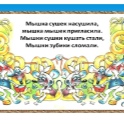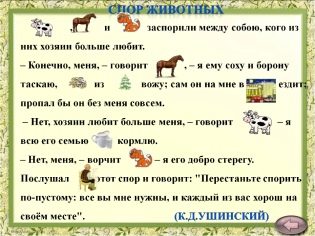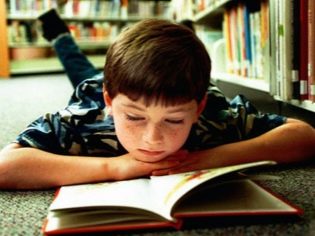How to teach a child to read quickly and correctly in grade 1: exercises and developmental activities
Reading is a very important process in cognitive activity. The child's ability to read well is the basis of his success at school. And the matter is not only in marks for school subjects, but also in intellectual development at all.
The better the child reads, the more zealously he does it, the more successful his development will be, the higher his self-esteem will be.
A general idea of the technique of reading
Reading is a process in which 2 sides stand out: semantic and technical. Under the semantic means the understanding of the content of the text, and the technical - quick, correct, expressive reading.
The reading technique is regularly checked in elementary school, as well as in the 5th and 6th grade. Students are given an unfamiliar text that they must read for one minute. Then the teacher counts the number of words and asks the child 1-2 questions for reading comprehension.
The verification of the reading technology takes into account:
- speed;
- reading awareness;
- the absence of gaps and errors in the pronunciation of words;
- the presence of semantic stress, pauses.
Standard reading speeds for schoolchildren (per minute):
- Grade 1 - 30-40 words;
- Grade 2 - 40-60 words;
- Grade 3 - 60-80 words;
- Grade 4 - 90-120 words.
To improve the reading technique, the child should smoothly, gradually move from slow syllabic reading to reading whole words. By the end of the elementary school, this must be done, otherwise in the middle level it will be very difficult for the student to master large amounts of material.
It is worth noting that many children, especially in grade 1, the very process of publicly checking the reading technique is frightening. From here errors can occur, sometimes the same speed can be explained. Therefore, it may be worth once again to check the child at home. If the result increases, the same will happen with the self-esteem of the little reader.
Why is speed important?
Reading speed is a direct factor affecting student performance. It is believed that a normal, adequate reading speed is equal to the speed of speaking, and that is 120-150 words per minute. Why is it so necessary for the learner to strive for this indicator? And the thing is simple math.
It was estimated that in grades 6-7 of a comprehensive school, a student receives daily oral homework in the amount of 8 pages (all oral assignments). This is about 6.5 thousand words, which will take about an hour at an average speed of 110 words per minute.
To learn the material, and not just to familiarize yourself with it, you need to read 2, or even 3 times, which increases the time up to 2-3 hours a day. Let's add time which needs to be given written tasks.
It is easy to conclude that poorly reading schoolchild will either spend most of the day only on lessons, or simply will not torture themselves, which will affect its estimates.
Among other things, the speed of reading affects the development process: improves memory and attention. And the reading speed affects the amount of reading: the more, the faster.
Reasons for the failures
A child can read slowly for several reasons:
- Undeveloped memory. This is not a pathology for a preschooler, so do not be alarmed. It happens that a child, reading in the line, for example, the fifth word, forgets the first.Because of this, the thought is lost, the kid does not understand what the text says, and interest is lost from it.
- If difficult words come across, the child stumbles and reads them slowly. The reason for this may also be the poor performance of speech organs.
- Low concentration of attention. The kid is easily distracted by various external factors, as well as his own thoughts, and interest in reading is dissipated.
- Vision angle. It often happens that a child sees not the whole word, but only a few of its letters. From this, reading slows down.
- Return to read. Often the young reader's eyes return to the previous word or sentence, he rereads them again.
- Inappropriate literature. Texts must be selected in accordance with the preferences and age of the child.
The ability to read well and quickly depends not only on the child’s intellectual abilities. It should take into account the psychological and physical abilities, diseases, the environment (including in the family).
Often, learning is hindered by the insecurity of the baby, the fear of being wrong. Or he just bored while reading, uninteresting text.
A real look at the abilities of the child
It is not necessary to demand from the child what he is currently unable to do. Learning to read should proceed calmly, without nerves, with a great deal of patience on the part of the parents.
If you force your child to ponder over books against his will, and then also curse when he can not squeeze at least a few sentences from himself, the result will not be positive.
First of all, the parent needs to accept the fact that his child does not have superpowers, he is not a child prodigy, but an ordinary kid who needs help and understanding.
The process of reading must be turned into a fascinating activity, to motivate the learner, not to forget to praise him, and in no case be annoyed.
Parent's help
To help your baby, just follow a few rules:
- Interesting texts. Do not fall asleep novice reader boring literature, even if informative nature. That he did not quit reading, it should enthrall him. Pick up books in accordance with his preferences.
- Games. The reading process can be turned into a game in many ways. More about them below. You can also organize home contests for the best reader.
- Read with your child regularly 30 minutes a day.
- Personal example. It is difficult to instill in someone a love of books, if he does not love them. Show by example that this is interesting and informative.
- Patience. Do not push, do not rush, show restraint and understanding.
- Positive motivation. It is worth talking more about what the child will achieve in the future if he learns to read well. If it is constantly repeated that he will grow up ignorant, provided that he does not read as expected, the result will be worse.
- Individuality of learning. As they say, you can not all cut with the same comb. A method applicable to one student may not be suitable for another. The same applies to the pace of learning. For each, he is chosen suitable, which is impossible to do in school, so it is important to read at home.
Training
Teaching your child to read should be involved in an interesting gameplay. First, you should draw his attention to this lesson with the help of games, then hold this attention through various exercises.
Here are some of them:
- Learning the alphabet. New letters are learning daily. For this we prepare cards with vivid illustrations. Let the baby looking for the similarity of letters and objects. Sounds are used in reading, not letters, so when studying the alphabet read the sound, not the name of the letter.
- In any place, wherever you are, practice. Ask your child, for example, during a walk, to name all the objects found on a specific letter. If it is hard for him, help, prompt.
- Attach the inscriptions on the items in the house. So these objects will be connected in the child’s presentation with certain words.Keep your finger on the word and read with him in syllables, for example, "SOFA", "MIRROR", etc.
- Word identification game. Prepare in advance the cards with the words familiar to your child (“father”, “mother”, “TV”, “door”, etc.), put them in front of him. One of the parents utters a phrase, and the child searches among the cards for the word that is in the sentence.
“Mom made a delicious lunch” - the child chooses a card with the word “Mom”.
- Making words from cubes or cards. 3-4 letters are selected from which the kid makes words. Gradually add the number of letters, complicating the task. There may be syllables on the cards.
- Learn nursery rhymes and songs with your baby. It develops memory.
- The game to identify the letters. Parents ask a letter, and the child searches for words with it at the beginning, middle or end.
How to teach a child to read quickly and correctly in 6-7 years?
You can train a first grader in speed reading using more complex exercises:
- Reading is a vital skill. You have to convince your child of it. Leave him a note with instructions, requests, wishes. Occasionally arrange a mini-quest: let them look for a gift following the signs and instructions.
- Parallel reading. We take two identical text (for mom and child). Mom reads out loud, changing the intonation, the tempo, and the child follows the reading. You can stop and ask the child to continue, or read the last voiced sentence, or find some name. Assignments may vary.
- Tongue Twisters. Be sure to develop the articulation apparatus.
- Words that differ in one letter. Take pairs of words, for example, a cat - a code, a dough - a place, etc. A child must explain how words differ externally and explain the meaning of each.
- Reading for speed. Notice a minute, after reading, count the number of words. Then ask the child to read the same passage again, emphasizing that the second time it will turn out better. And really work out. So he will read faster and faster each time.
- Reading about myself. You always read out loud more slowly, so let the child sometimes read the task to himself and then retell what he read.
- Development of the visual field. In the table, for example, 5x5 in each cell, write a letter or syllable. Have the student read them from right to left and vice versa, top to bottom, diagonally. Give the task to find a certain letter or syllable, to make a word, as in philvord, only at the simplest level.
- Buzz reading. The child reads the text to himself, and buzzes out loud like a bee. This exercise is aimed at increasing concentration.
Exercises for children 8 years old
For the development of a runaway reading from a second-grader, we increase the load, complicate the tasks:
- Game "Words from words". Write a long word, for example, “capricious,” and ask them to make a few small ones.
- Proposals requiring adjustment. Write a set of words, similar to the sentence, and the child puts all the words in places: "The guys went to the river to swim in."
- The development of anticipation. Take the text where the words go with missing letters. As you read, the child inserts the missing items.
- Reading "On the heights and roots". Take a ruler, close the bottom of the line and let the child read the tops. When this task will be well developed, you can go to the roots.
- "Thinking out loud". The child is asked a question or an initial phrase is offered and about 10 minutes to think it over. He should come up with and voice a coherent text. It is necessary to follow the logic of the sequence, correctness of the presentation, speech errors, correct them.
- You can try to read from right to left. The task is not easy, but children are interesting and even fun.
- To complicate the problem, the text can be turned upside down - first by 90 degrees, then by 180. So the images of whole words will be stored in the child's memory.
- Reading by roles. Several people can participate, each voicing his character with the necessary intonation.Also, a child can read one for all heroes, changing his voice when moving from one character to another.
And a few more tips:
- Vary the tasks, do not dwell on one thing. This will stir up interest.
- Praise constantly. Do not force, do not punish by reading, do not compare with the achievements of other children. Compare the child with himself, his real achievements with the past, aim at the future.
- Show with a personal example that the book is a storehouse of knowledge. Read not only for the child, but also for himself in front of his eyes.
- Read the child at night.
- Choose a story with an intriguing ending to study - the young reader should be interested in how the story ends.
- Teach from a young age to a detailed retelling.
- The main thing is to instill in the child from an early age respect for the book, make sure that it should be handled with care and care.
To learn how to quickly teach a child to read, see the next video.


















































